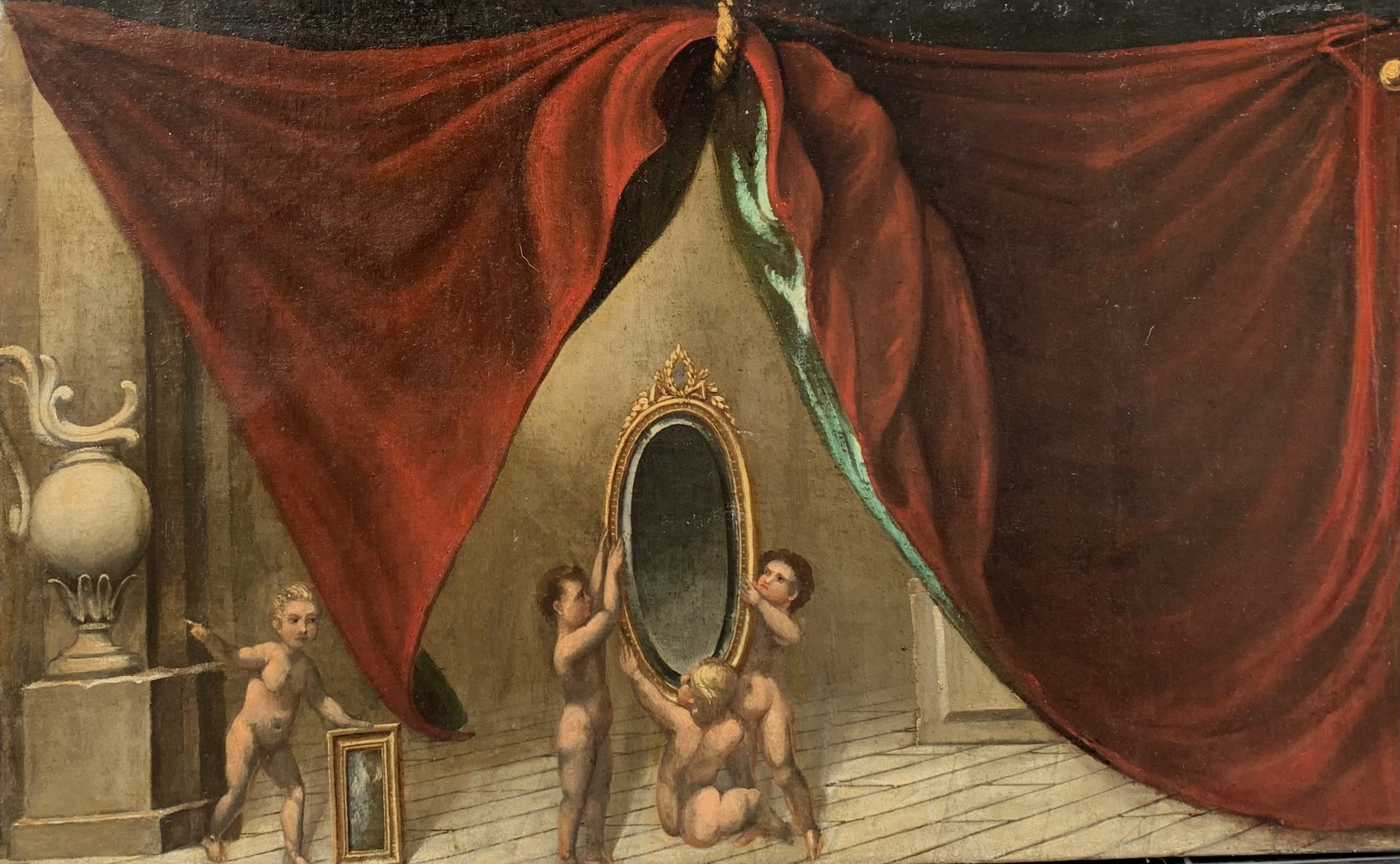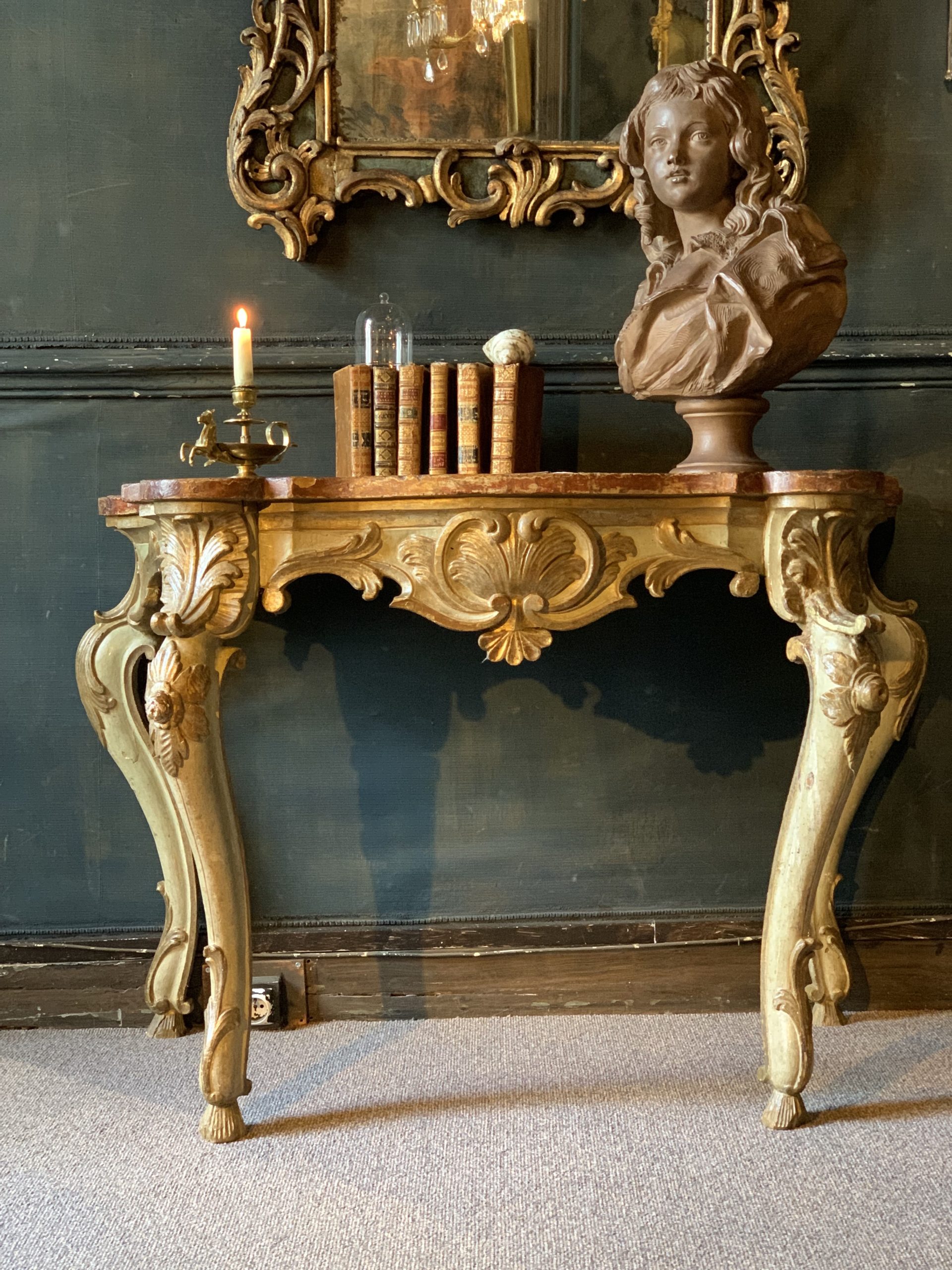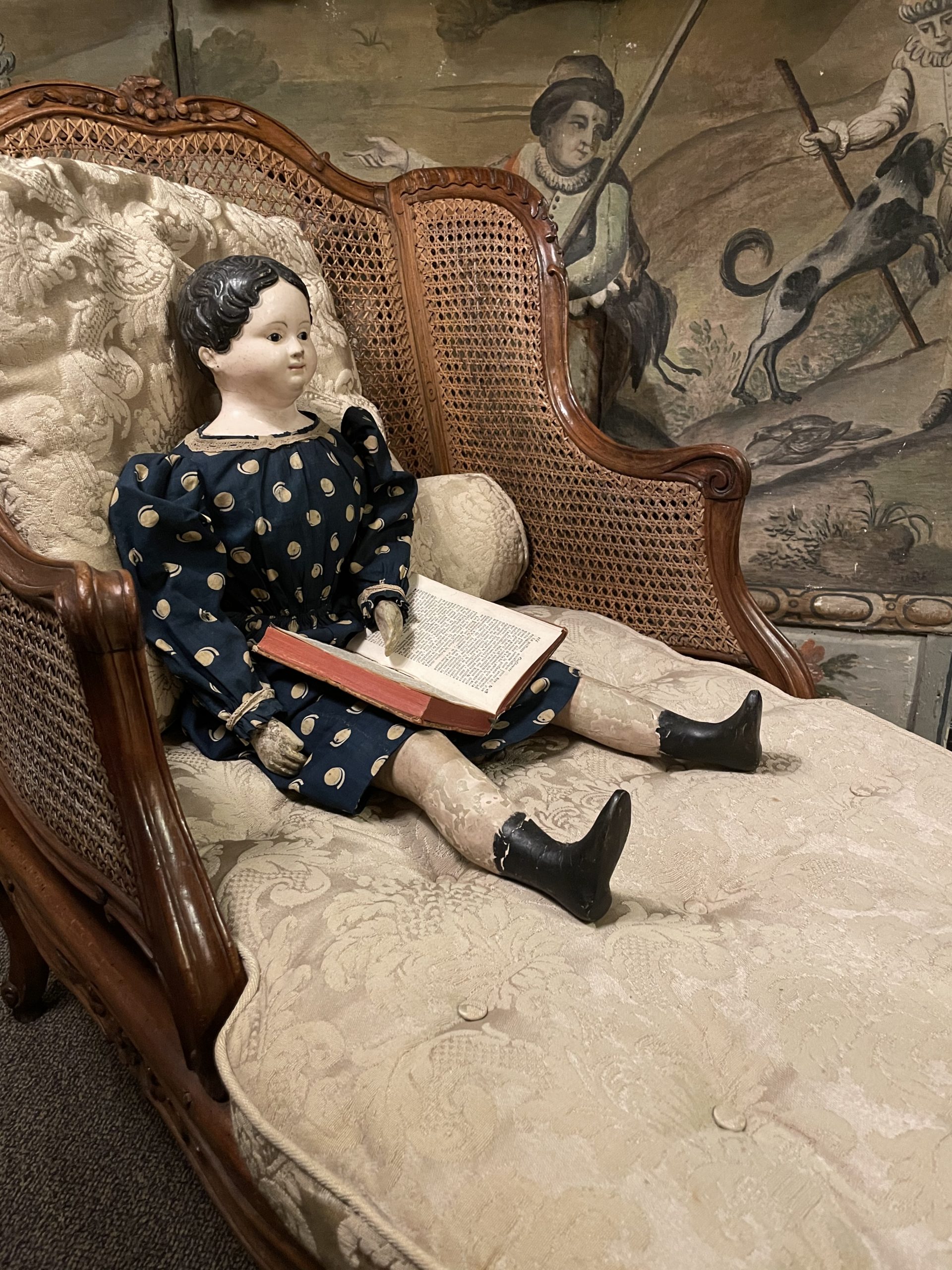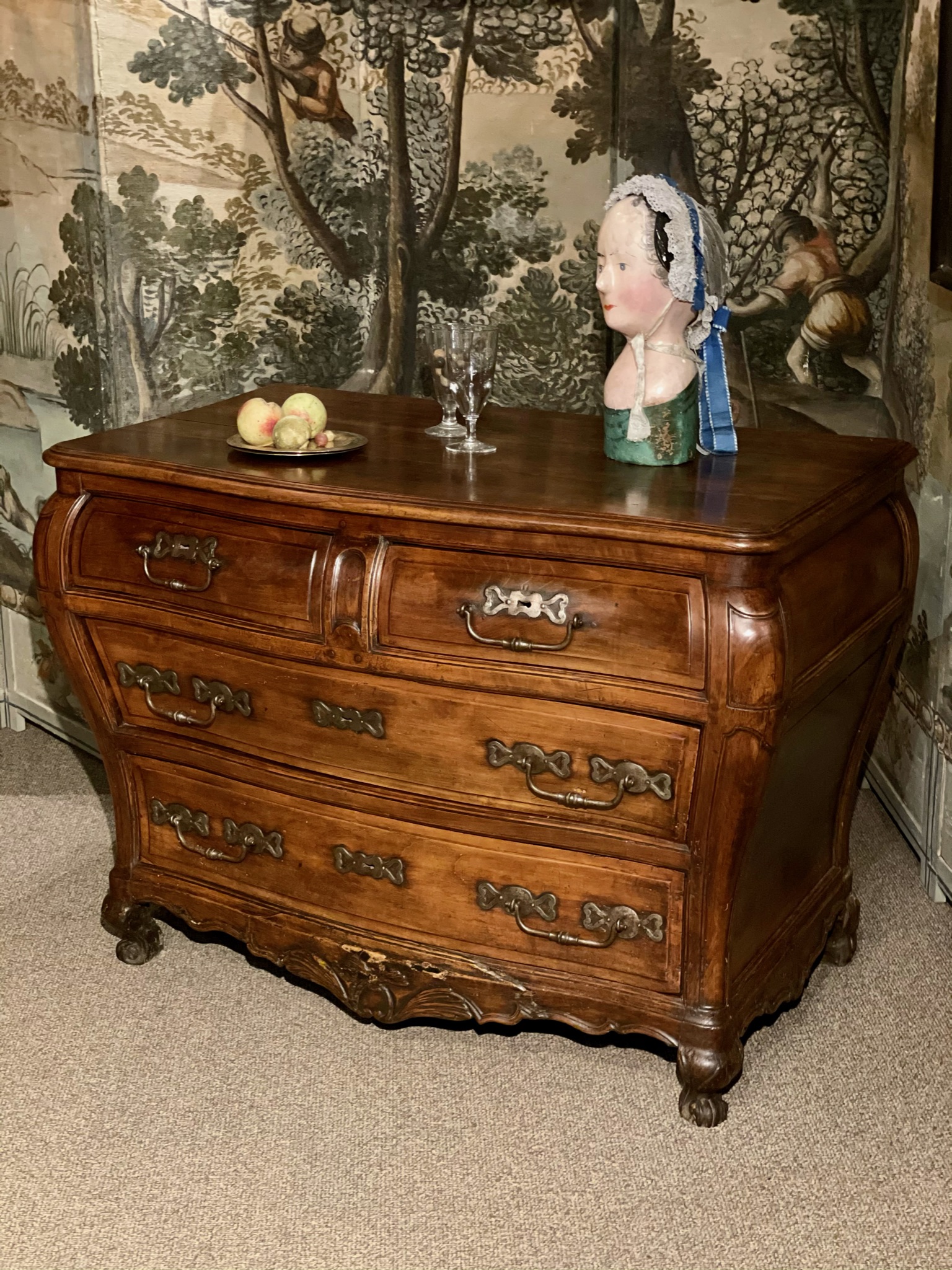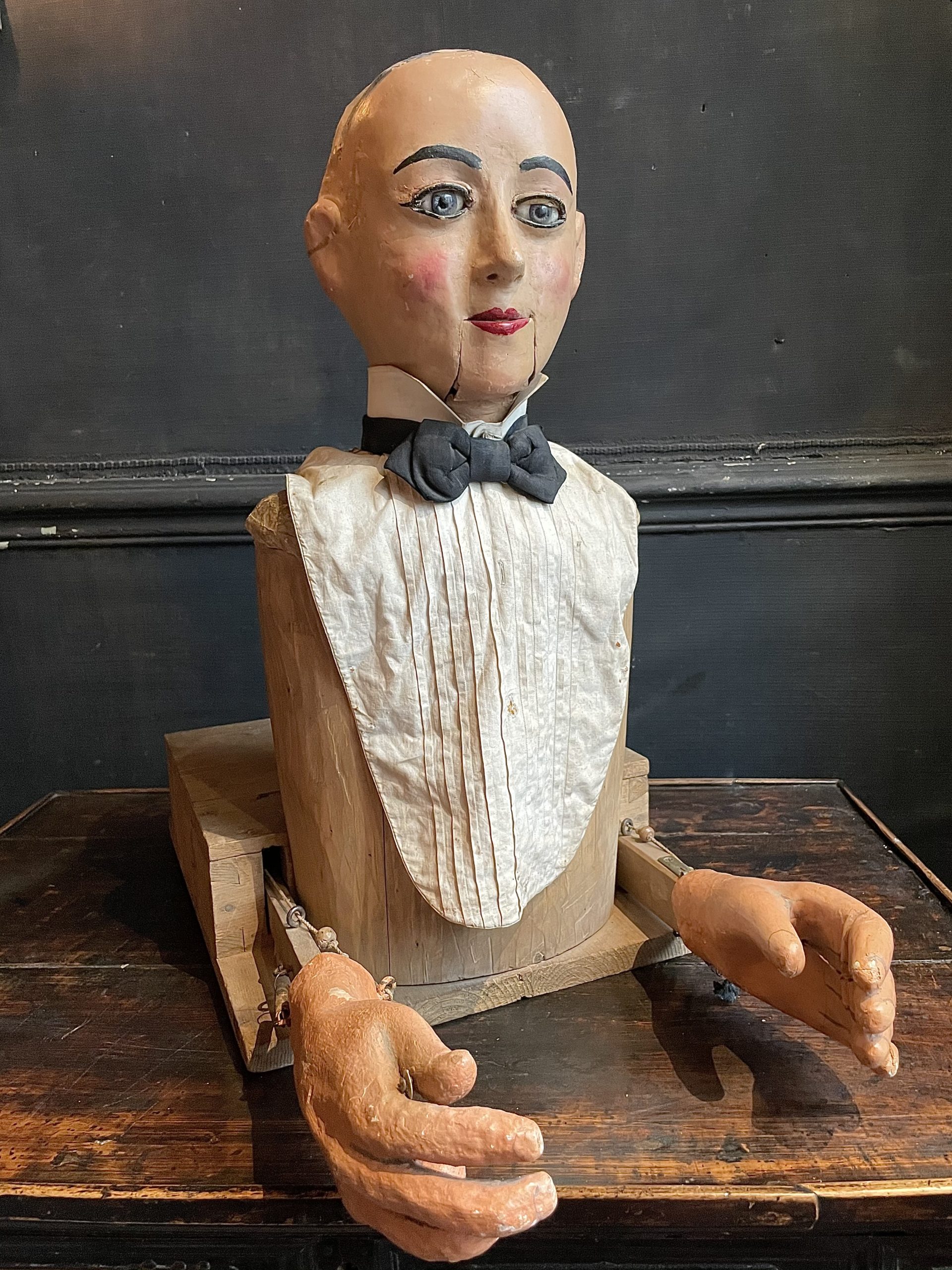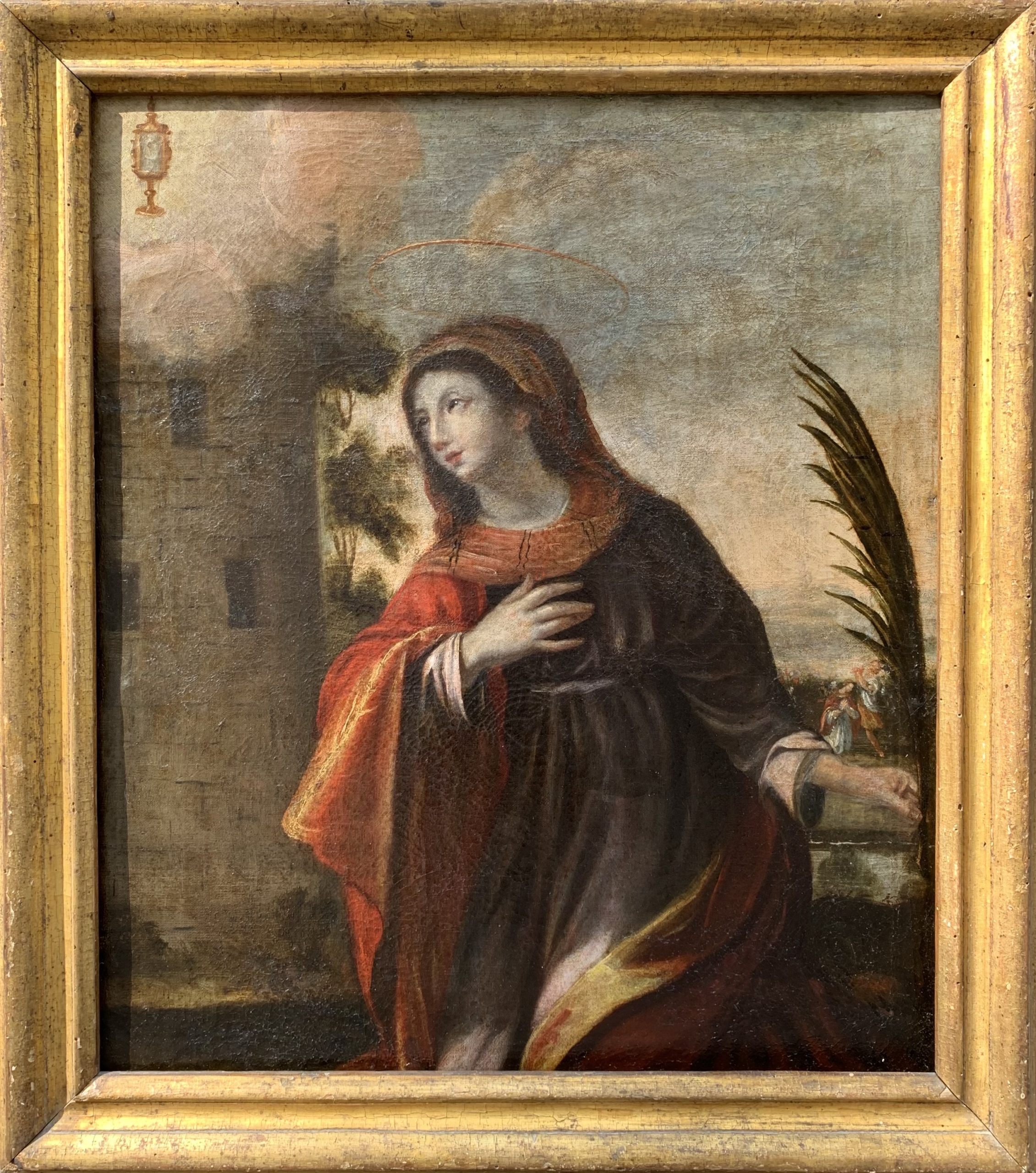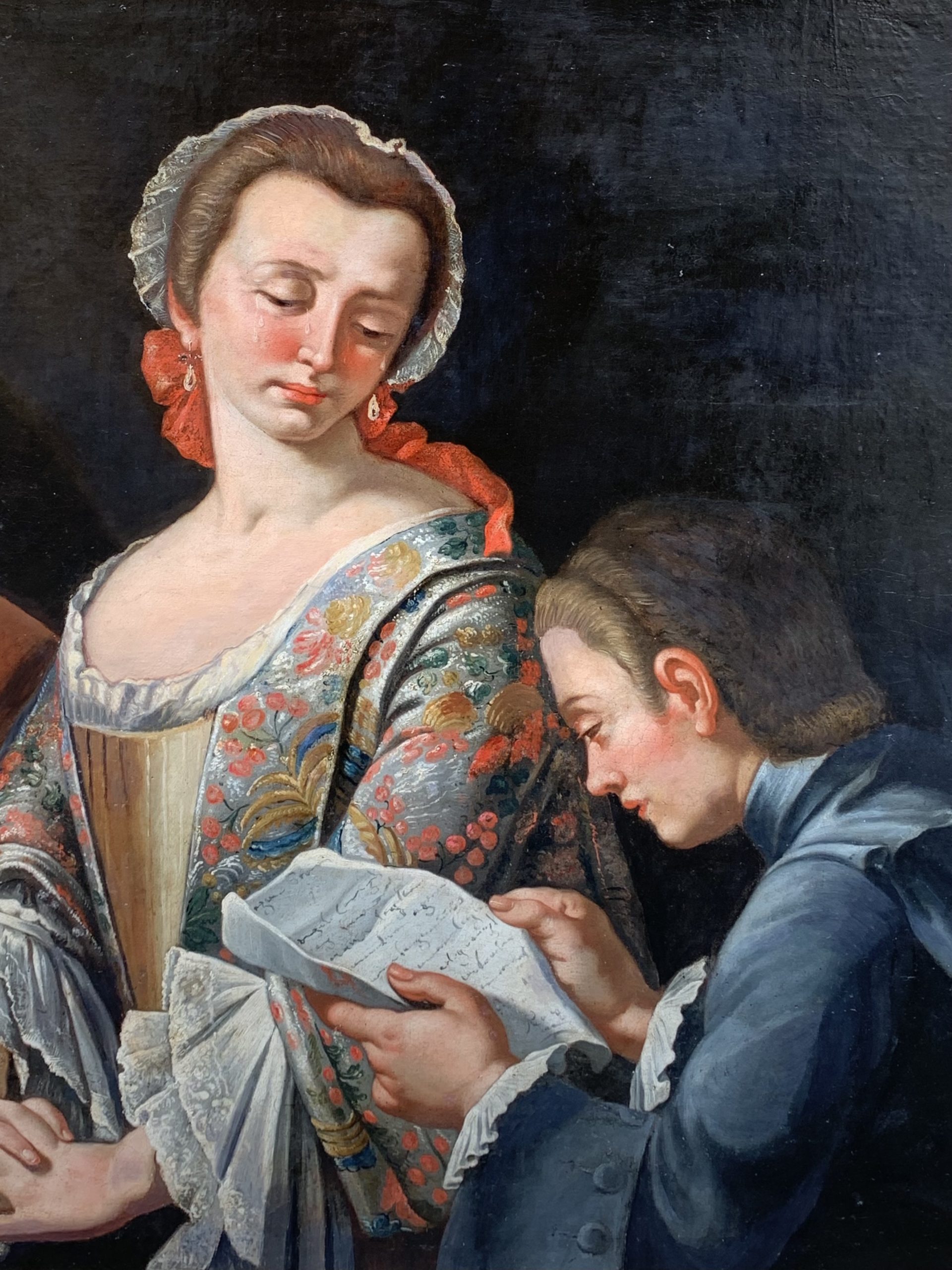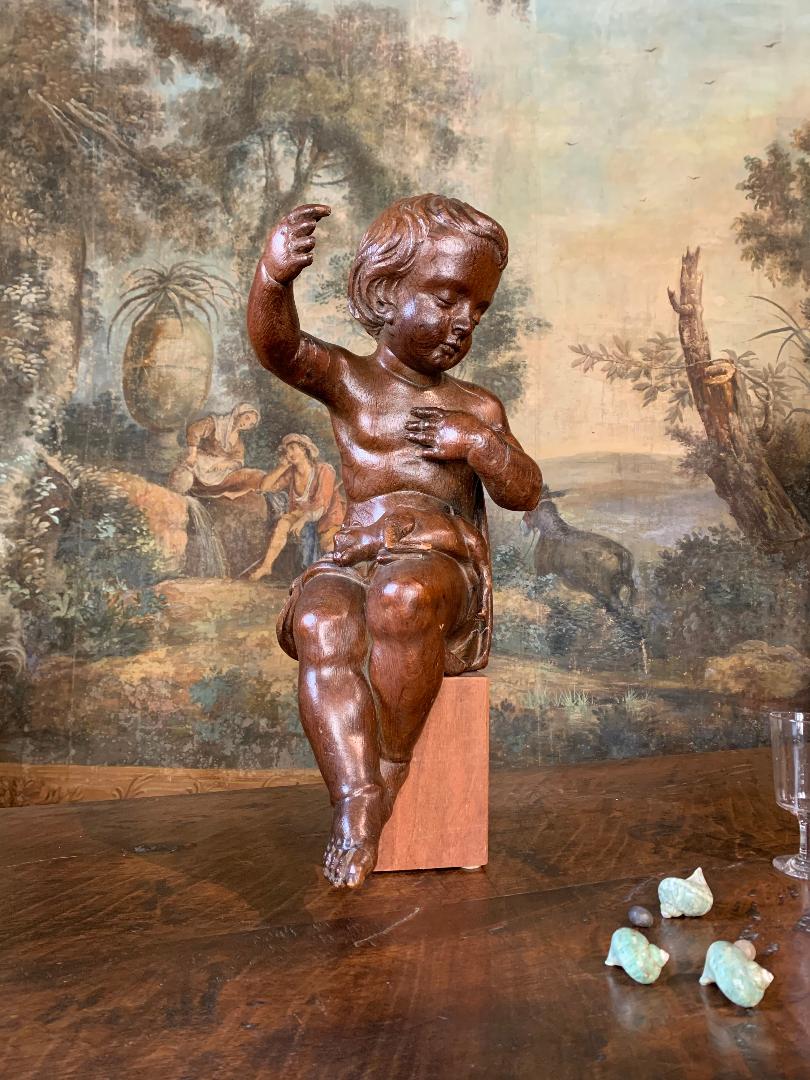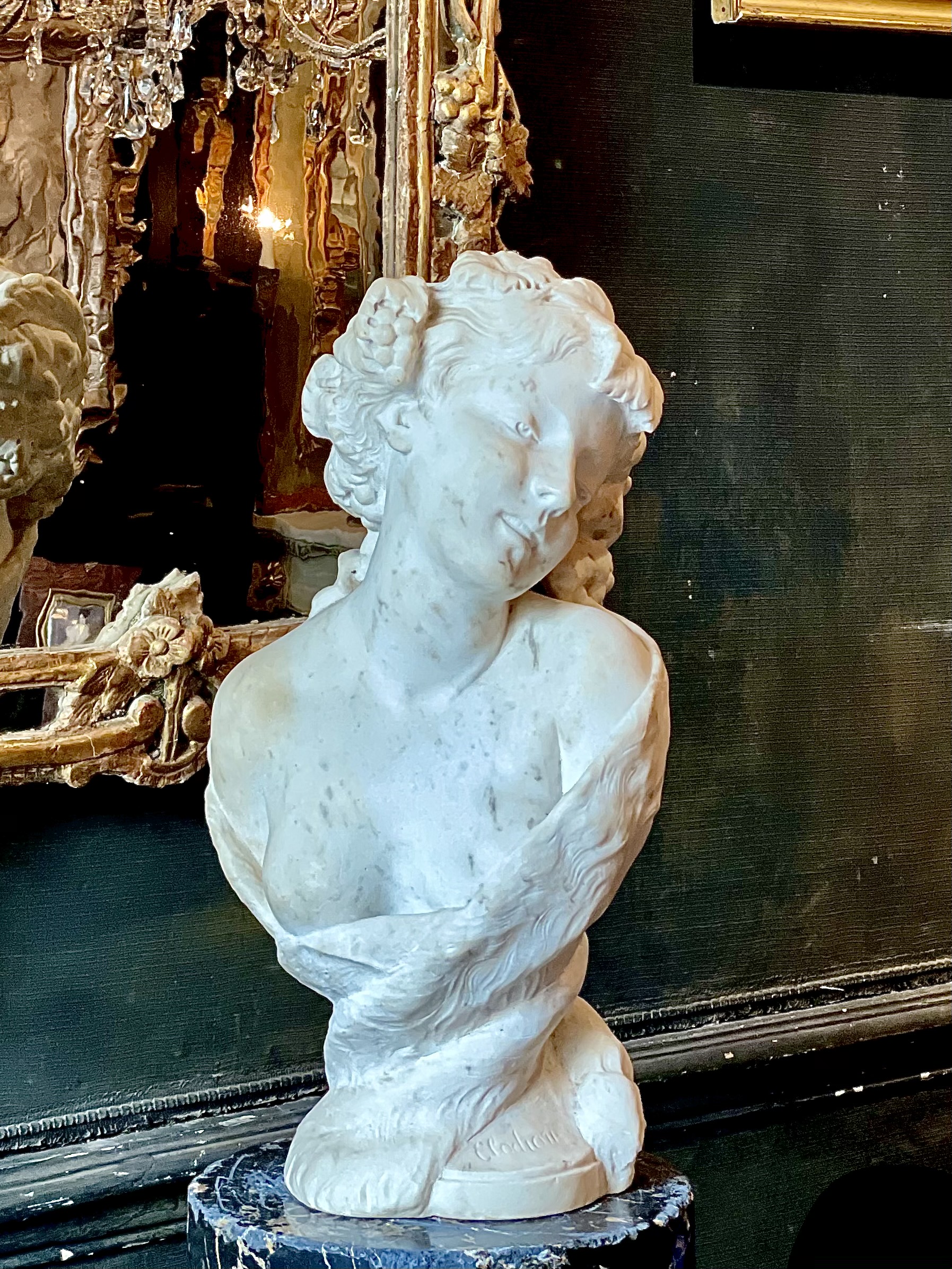Oil on canvas representing the allegory of sight.
This painting is actually composed of two paintings attached and relined. Was it a diptych or a series of several paintings, two of which would have been joined together?
Console in polychrome sculpted wood, with 4 arched legs, with acanthus leaves and flowers patterns, faux marble patina on the top typical of Italian furniture. XVIII century
Lucca, Italy
Pauline doll, German Nuremberg cardboard box with its original clothing.
Sulphide eyes.
Circa 1830
Germany
Curved chest of drawers in walnut wood, opening onto four drawers, front arched legs and finished in snail, original handles, beautiful patina, and very deep, missing locks.
XVIII century,
Dauphiné, France
This conjurer’s automaton was probably a boutique model. wood and papier-mâché, glass eyes, original collar and bow tie, mechanisms in perfect working order,
19th century,
Italy
Oil on canvas depicting Sainte Barbara, on its original canvas, original gilded wooden frame.
XVII century,
Italy.
Oil on canvas, genre scene. It is probably about Suzanne Simonin, the narrator of Denis Diderot’s memoir “La Religieuse”, which is an ode to the freedom to choose one’s destiny…
18th century.
Italian school, entourage of Giuseppe Bonito.
Oak wood sculpture of the child Saint Luke holding a calf on his knees.
Circa 1800,
Flanders?
Oil on canvas, family portrait.
In the middle of the 19th century, the bourgeoisie, actor and beneficiary of the industrial revolution, wanted to leave to posterity the image of its economic and social success. Failing to belong to a noble line, she celebrates the family, keystone of this new bourgeois model. The challenge is then to create an image for yourself at the same time as to build a genealogy, a historical legitimacy…
19th century,
France.
Bust of a fauness after Clodion (1738-1814), in marble.
XIX century,
France.

